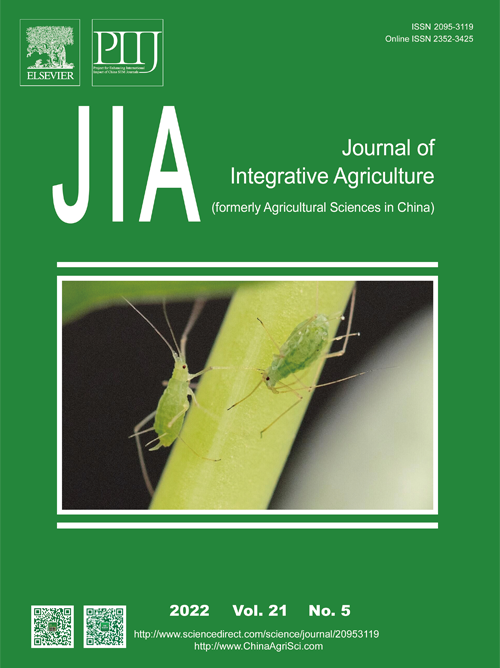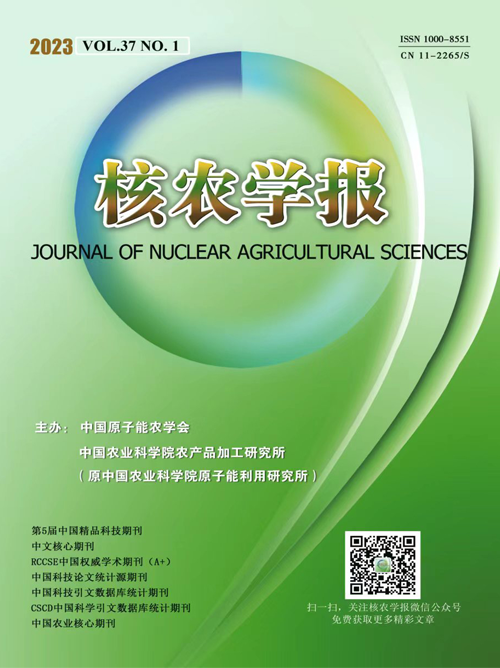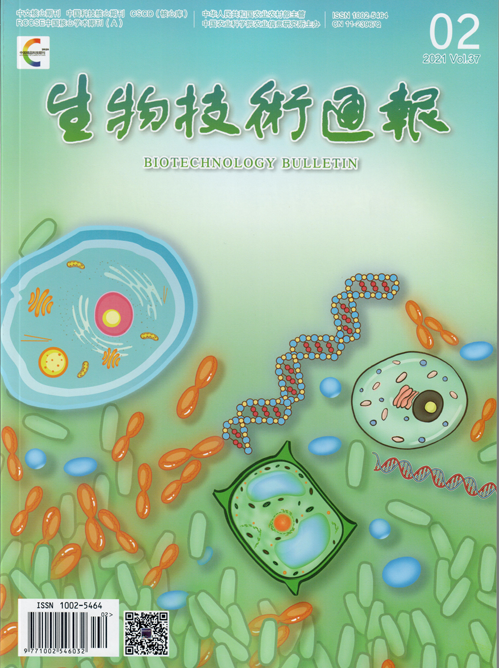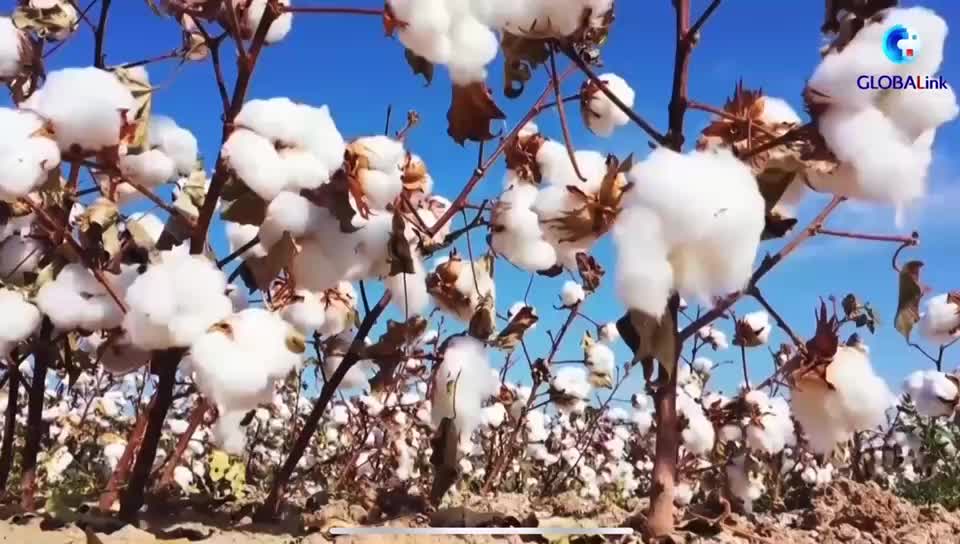
* Xinjiang contributed more than 90 percent of China's cotton output last year, harvesting a total of 5.12 million tonnes of cotton.
* It is estimated that the overall mechanization level of crop cultivation and harvesting in Xinjiang will reach more than 90 percent this year, with over 95 percent for major crops of wheat, corn and cotton.
* In recent years, advanced farming methods, modern and smart machinery, and optimized management practices have been widely applied in Xinjiang. As a result, many crops grown there have set new high-yield records at regional or national level.
URUMQI, Nov. 22 (Xinhua) -- For Haila Cherza, a 67-year-old cotton farmer in northwest China's Xinjiang Uygur Autonomous Region, the old tradition of harvesting with heavy manual labor is a thing of the past. The new reaping approach has been made possible by automatic machines equipped with self-navigation systems."Cotton yields and profits were low in the past. However, we now use machines for sowing, plowing and harvesting, as well as drones for spraying pesticides," said the farmer of the Kazak ethnic group who has been planting cotton for over four decades.Through the collective economy, the fragmented cotton fields distributed to households in Haila Cherza's village have been merged into collective plots. "I receive a considerable land rent and wage for managing about 1,500 mu (100 hectares) of cotton fields," he added.Xinjiang contributed more than 90 percent of China's cotton output last year, harvesting a total of 5.12 million tonnes of cotton. Shawan City, where Haila Cherza resides, is one of the region's largest cotton production bases.
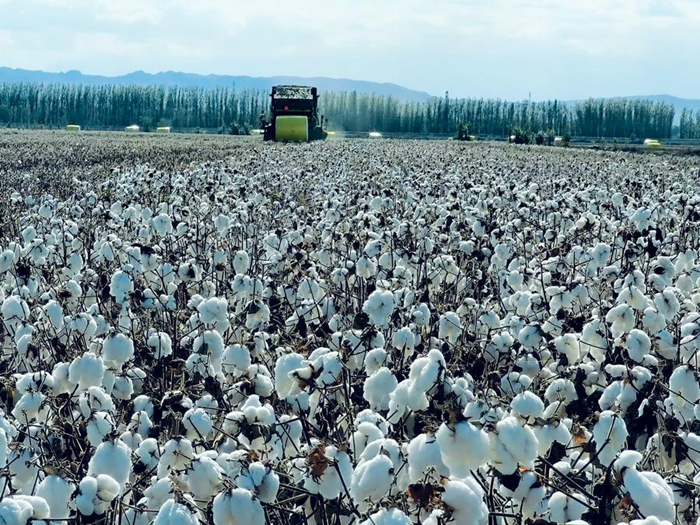
A cotton harvester is at work in Shawan City, northwest China's Xinjiang Uygur Autonomous Region, Oct. 8, 2024. (Photo by Guan Bing/Xinhua)
At Shawan's 100,000-mu high-yield cotton demonstration fields, the average cotton yield per mu is estimated to reach 580.6 kg through a yield trial in October. According to Li Xueyuan, a researcher at the Xinjiang Academy of Agricultural Sciences, the high yield in such large areas is a fruitful outcome that can provide reliable references for cotton farming practices.In recent years, advanced farming methods, modern and smart machinery, and optimized management practices have been widely applied in Xinjiang. As a result, many crops grown there, including cotton, corn, peanuts and soybeans, have set new high-yield records at regional or national level.
ADVANCED METHODS
Advised by experts from the Chinese Academy of Agricultural Sciences (CAAS), Lou Guangwei, a farmer of Qapqal Xibe Autonomous County of the Kazak Autonomous Prefecture of Ili, applied a dense planting method across his more than 30,000 mu of corn fields.
Compared to the traditional planting method, the number of corn plants per mu rose from about 6,000 to 8,200, with a yield increasing from 1,200 kg to 1,330 kg, while 200 cubic meters of water can be saved at least.
"Thanks to agricultural experts who came to the fields and provided us with technical guidance, our corn yields have increased over the years," said Lou.
The expert Lou mentioned is Li Shaokun, a researcher with CAAS who introduced the dense planting. The method boosts production output by increasing the density of plants on farmland and precisely regulating the growing condition of corn to enhance its resistance to environmental stresses.
"With dry weather, abundant sunshine and water, the large temperature difference between day and night and a high mechanization level in facilities, Xinjiang's Ili is an ideal region for deploying the dense planting method," said Li Shaokun.

Staff members measure the spacing of wheat seedlings at a seed company in Changji City, northwest China's Xinjiang Uygur Autonomous Region, Nov. 7, 2024. (Xinhua/Ding Lei)
Experts assist farmers in choosing the right seeds to ensure that corn thrives when planted densely.
Farmers level their soil evenly with machines, use the BeiDou Navigation Satellite System to ensure the precision of both quantity and placement of seeds, and utilize certain anti-lodging agents to help the plants stand straight and acquire sufficient light.
It is estimated that the overall mechanization level of crop cultivation and harvesting in Xinjiang will reach more than 90 percent this year, with over 95 percent for major crops of wheat, corn and cotton, according to the department of agriculture and rural affairs of Xinjiang.
Data from the department shows that, in the first half of this year, the summer grain sown area in Xinjiang stood at 17.57 million mu. The average yield per mu reached 394.6 kg, up about 2 percent year on year.
MODERN FARMING TECHS
According to Li Jing, deputy head of the department of agriculture and rural affairs of Xinjiang, the region has also been promoting the technique of supplying dissolved fertilizer to crops through the drip irrigation system.
Xinjiang's Manas County has successfully implemented this technique in its cotton fields by utilizing a smart agriculture system that integrates irrigation systems, soil sensors, weather and pest monitors, and other facilities.
"With the help of the system, about 30 cubic meters of water per mu can be saved on average at cotton fields in Manas, and over 200 yuan (about 27.8 U.S. dollars) can be saved through reducing the cost of water, fertilizer and labor," said Lyu Xiaoqing, head of the agriculture and husbandry technology promotion center of Manas.
Lyu said that the designated amount of water and fertilizer can be distributed to cotton accurately at a set time, which improves farming efficiency, makes cotton grow better and increases output.
She added that monitoring data can be collected and used to advise farmers on scientific decisions. "A farmer can manage up to 2,000 mu of cotton fields, with many farming activities done through phone apps."
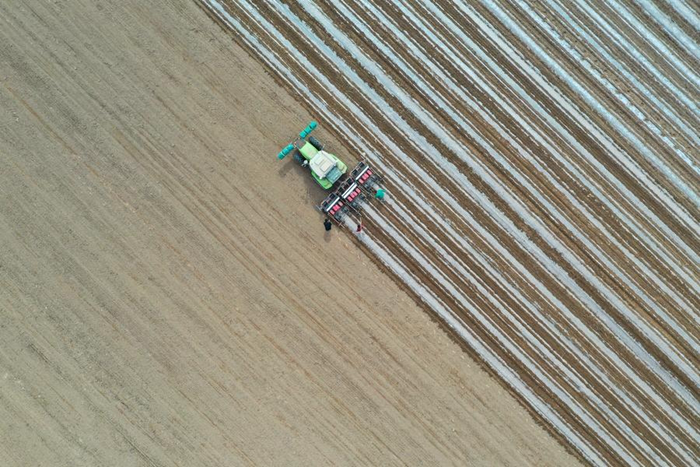
An aerial drone photo taken on March 21, 2024 shows a seed planter at work in a field in Tianhai Village of Liuyuan Town, Aksu City, northwest China's Xinjiang Uygur Autonomous Region. (Xinhua/Ding Lei)
With similarities in geographical environment and climatic conditions, Xinjiang has also been engaged in international agricultural cooperation with Central Asia countries.
This October, in the city of Almaty, Kazakhstan, researchers of the Kazakh Research Institute of Agriculture and Plant Growing (KRIAPG), were busy conducting a yield trial for 10 varieties of corn developed by a Chinese company.
"We are developing corn varieties featuring resistance to high temperature, salt-alkali and drought, which suit conditions of Xinjiang and Central Asia," said Ma Ding, a seed expert from China, adding that his company is cooperating with KRIAPG to gain quality certification and market recognition in Kazakhstan.
According to Sholpan Bastaubayeva, head of KRIAPG, the institute has been cooperating with the Chinese seed company for nearly a decade in areas such as breeding and training, resulting in reduced agricultural costs and increased farming efficiency.
Sun Tan, vice president of CAAS, said that China and Kazakhstan have a solid foundation in international agriculture cooperation. He said that through technology exchange and bilateral cooperation, Central Asia's cotton production capacity and farmers' income are expected to grow, while China can expand its channel for importing cotton.
(Video reporter: Ding Lei and Gou Lifeng; Video editors: Zhang Yichi, Wei Yin and Li Qin)




